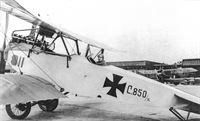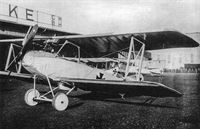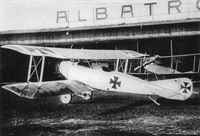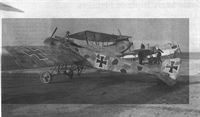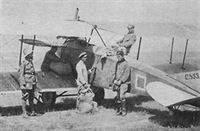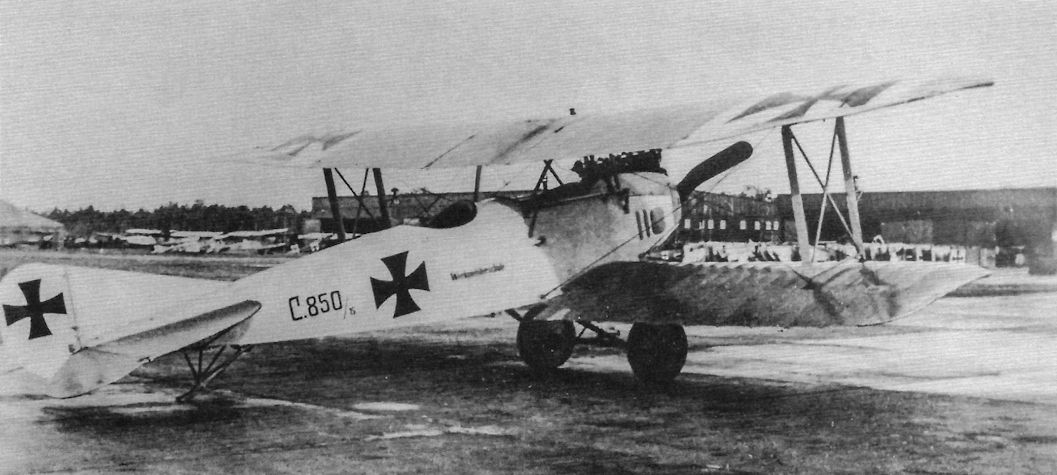
Описание
Страна: Германия
Год: 1916
Варианты
- Albatros - B.I - 1913 - Германия
- Albatros - WDD / W.1 - 1913 - Германия
- Albatros - B.II - 1914 - Германия
- Albatros - B.III - 1915 - Германия
- Лебедев - Лебедь-XI - 1915 - Россия
- Albatros - C.III - 1916 - Германия
- Albatros - C.IV - 1916 - Германия
- Albatros - C.VI - 1916 - Германия
- Albatros - W.2 - 1916 - Германия
- Лебедев - Лебедь-XII - 1916 - Россия
- Лебедев - ЛМ-1 / Лебедь Морской - 1916 - Россия
- O.Thetford, P.Gray German Aircraft of the First World War (Putnam)
- J.Herris Albatros Aircraft of WWI. Vol 1: Early Two-Seaters (A Centennial Perspective on Great War Airplanes 24)
-
J.Herris - Albatros Aircraft of WWI. Volume 1: Early Two-Seaters /Centennial Perspective/ (24)
After it was accepted that the observer should be situated in the rear cockpit, the Albatros C.IV was relegated to second-line duties. Here C.IV C.850/15 has been converted to test the Albatros G.III wing cellule. Although the test cellule was smaller than the G.III, the thick airfoil and distinctive struts of the G.III are clearly seen; the rest of the C.IV was the same as the well-known C.III. However, the pilot's cockpit was in the rear and the observer's cockpit was in front - and interestingly enough, rails for mounting flexible machine guns are still mounted on each side of the observer's cockpit!
-
J.Herris - Albatros Aircraft of WWI. Volume 1: Early Two-Seaters /Centennial Perspective/ (24)
Alb C.IV (1915). (Thick airfoil testbed.)
Albatros C.IV C.850/15 at Johannisthal with gun mounting rails fitted around the sides of the forward observer's cockpit. The C.IV used the same airframe as the widely-produced C.III, but unlike the C.III, it retained the observer in the front cockpit. Rails alongside the observer's cockpit were intended to mount flexible machine guns. Only a dozen C.IV aircraft were produced because by the time the aircraft appeared, placing the observer with his flexible gun in the rear cockpit was realized to be far more effective in combat. (Peter M. Grosz Collection/SDTB) -
J.Herris - Albatros Aircraft of WWI. Volume 1: Early Two-Seaters /Centennial Perspective/ (24)
Albatros CIV (L12) with Mercedes D.IIIa engine and Garuda propeller.
Image of Albatros C.IV C.850/15 in front of the Albatros factory at Johannisthal. No serial is visible and no gun mounting rails are fitted around the forward observer's cockpit, but an interesting fairing is seen below the observer's cockpit, perhaps for a camera? (Peter M. Bowers Collection/The Museum of Flight) -
J.Herris - Pfalz Aircraft of WWI /Centennial Perspective/ (5)
Three rare aircraft are captured in this photo. A Pfalz E.VI in the foreground was hand painted with lozenge patterns to test a new camouflage system; it retains the national insignia on the elevators. The Pfalz E.V Typenprufung machine in the background dates this photo to July 1916. Directly behind the E.VI is Albatros C.IV C.850/16 as can be determined by its distinctive wing and interplane struts.
Другие самолёты на фотографии: Pfalz E.I/E.II/E.IV/E.VI - Германия - 1915Pfalz E.V - Германия - 1916
-
J.Herris - Albatros Aircraft of WWI. Volume 1: Early Two-Seaters /Centennial Perspective/ (24)
Unarmed Albatros C.IV C.853/15 in use as a mail plane in Mesopotamia with Turkish markings and normal C.III-type wings. Aircraft C.853-859/15 (except for C.857/15) were delivered to the Turkish flying corps. At least two aircraft, C.851/15 and C.860/15, were delivered to German flying schools for use as trainers.
O.Thetford, P.Gray German Aircraft of the First World War (Putnam)
Albatros C IV
Only a single aircraft of this type was built, C 850/15, powered with the 160 h.p. Mercedes D III engine and utilising C III fuselage, tail assembly and undercarriage chassis, complete with claw brake. The pilot sat in the rear cockpit, and there was an extremely spacious front cockpit underneath the top wing. The deep-sectioned wings, with their special single-bay interplane struts which dispensed with incidence bracing, were built to scale for the G II and G III types which came later. Aircraft in background above are B III (right) and C I (left).
Описание:


